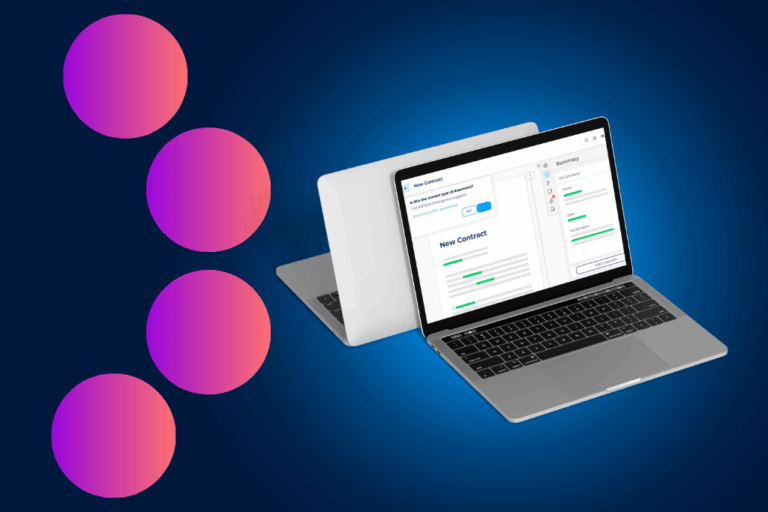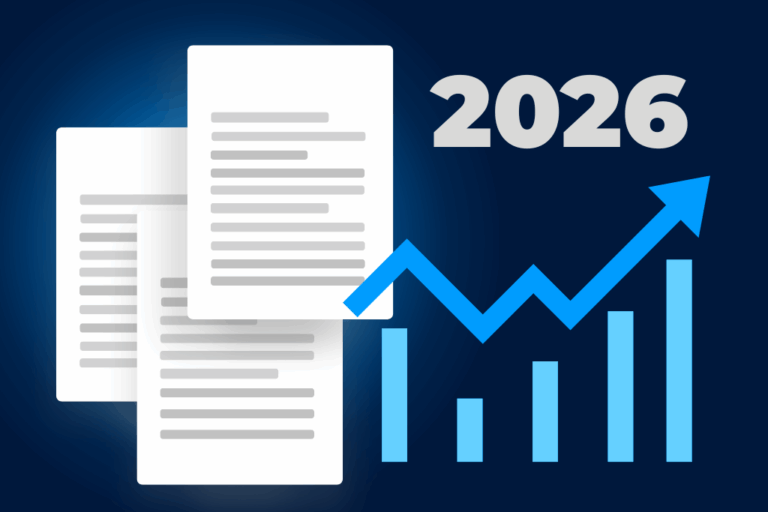Technologies like OCR, IDP, and LLMs are transforming how AI in private equity looks like: how firms extract, interpret, and act on legal data, especially within Contract Lifecycle Management (CLM) and matter management.
Key Insights
- AI automates repetitive tasks, enhances document accuracy, and increases legal efficiency
- OCR enables extraction from scanned or non-editable documents
- LLMs draft, summarize, and detect anomalies in legal language
- CLM platforms integrate these tools to manage workflows, approvals, and compliance
It is no secret that the private equity sector deals with a lot of documentation. Firms have been facing a surge in that volume in recent years, as new trends such as the proliferation of side letters or continuation funds expand. In such a context, it goes without saying that AI in private equity has also gained popularity, not without reason.
From term sheets to complex fund agreements, fund counsel, limited partners, and legal teams are in need of solutions to fill in the void of manual tasks. There’s a whole new generation of AI tools coming in, thanks to technologies such as Optical Character Recognition (OCR) and Large Language Models (LLMs).
These are fundamentally reshaping how private equity legal teams manage contracts, obligations, and legal matters. Let’s dive deeper into it.
How OCR, LLM and IDP are Changing the Game
AI in private equity looks a specific way: it’s all about automating tasks and accelerating historical manual processes, keeping documentation in order and leveraging technology to gain competitive advantage.
OCR: Text Extraction
OCR steps in when uploading scanned documents, PDFs, images, or any other non-editable files. This technology reads and converts the text from those non editable files into readable data, extracting the information you need. This means a fund manager could for instance, extract fund subscription agreements, hand-annotated side letters, or even scanned board minutes and easily turn them into data that can be shared with interested parties. Modern OCR tools now recognize handwriting, tables, and low-quality scans. This is particularly critical for legacy deal files.
IDP: Understanding the Content
While OCR enables raw data extraction, it’s only the beginning of the process. Indeed, fund counsel, portfolio managers, and legal teams need to understand what such data means and implies for the business. That’s where Intelligent Document Processing (IDP) comes in. IDP goes a step further by understanding the data and identifying key components such as key clauses, regulatory disclosures or covenants.
LLMs: Interpreting, Drafting, and Reasoning
The final piece is the Large Language Model (LLM), which can summarize obligations, identify anomalies, or even draft redlines. LLM based features and technology train on a large array of information, in the case of Private equities it can be contracts and legal language. By doing so, they’re able to detect inconsistencies and answer natural language queries.
To sum it up, OCR handles data extraction, IDP manages content classification and structuring, and LLMs provide interpretation and even generate new content based on the extracted data.
Connecting the Dots CLM and Matter Management
Contract Lifecycle Management tools, that are vastly used across different industries, are usually based in the technologies described above. Private equity firms can benefit from a CLM in many cases.
CLM as the Engine Room
Contract Lifecycle Management platforms become the integration point for all three AI technologies. Once OCR extracts structured data, LLMs enrich it with summaries or classification. Whether it’s to create approval workflows, or speed-up signature processes, there are many benefits for legal teams in using a CLM system.
But what does CLM automation looks like for Private Equity?
- Clause library generation: Update clauses based on real-world negotiated examples.
- Regulatory tracking: embed deadlines, risky clauses, and more based on your past contracts and side letters and improve compliance.
- Create approval workflows: generate flows that trigger approvals, denials, and signatures. These workflows use specific data such as jurisdiction or clause type.
With a CLM, private equity legal teams work with a single source of truth for private equity legal teams. This helps mitigate risk and align with audit, compliance, and reporting needs.
How to Get Started
Although AI is more and more present in both our private and professional lives, it can still feel daunting. This is especially true when putting it to work in delicate contexts such as private equity.
For this reason, it’s recommended to focus AI efforts on high-volume documents like side letters, or NDAs. These are usually very complex and occur frequently enough to deliver strong ROI from automation. As much as AI and automation help, keeping a human in the loop during early implementation is key. Legal staff and other responsible members, like fund counsel, should validate extracted data to ensure accuracy and build trust in the system.
Your chosen service provider will make a difference of course. Many platforms offer AI integrating via APIs, although it’s safer and more effective to go for a provider offering private proprietary AI.
The Road Ahead
Private equity legal teams act strategic risk managers to some extent, and AI is their best ally today. By using OCR and LLMs mainly to supercharge CLM and matter management, firms gain more than efficiency: they gain resilience.
Firms that embrace this AI-powered stack will not only reduce manual work, it unlocks deeper insights across their portfolios.
Curious about what DiliTrust can do for your Private Equity firm? Contact us today.


